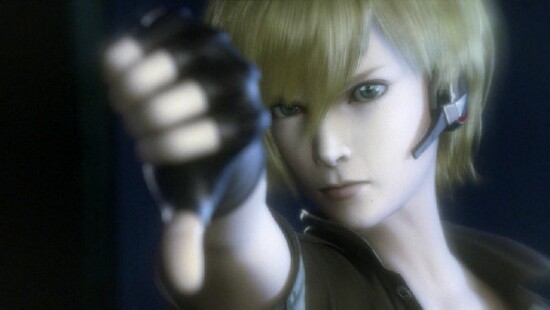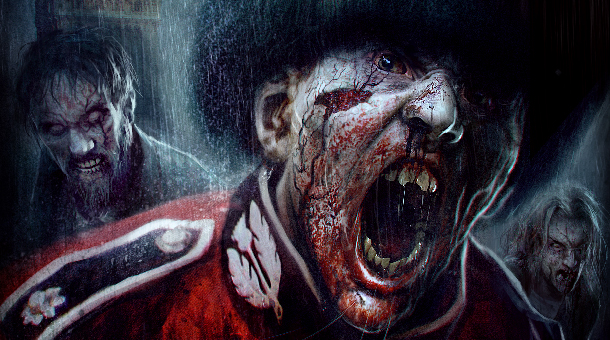
This year marks the twentieth anniversary of E3, so it felt like the perfect time to examine Nintendo’s history at the event, which it has been a part of since day one. Let’s finish our tour of Nintendo’s E3 past!
2006
After Nintendo’s 2006 E3 presentation, few could have guessed that the waggle would become the trend of the video game industry for years to follow. Wii had arrived, with its unique motion controls ready to set the world alight, which is exactly what the system did. Nintendo had maintained a high level of secrecy around Wii’s software lineup, so as the company unveiled gamed like Wii Sports, Super Mario Galaxy, Metroid Prime 3, and The Legend of Zelda: Twilight Princess, much of it was a huge surprise to attendees. Unorthodox, shocking, and (as its code name asserted) revolutionary, Wii with its motion controls was unlike anything Nintendo or any other gaming company had brought to the L.A. Convention Center. The console was set to make a run at Sony and Microsoft that would shock the industry at large, and re-position Nintendo as number one for years to come. DS wasn’t forgotten, however, as DS Lite, a much-improved slimmer version of the original DS hardware, was revealed to the world. With The Legend of Zelda: Phantom Hourglass showed off as a direct sequel to The Wind Waker, Nintendo was firing on all cylinders in 2006, and it was a show many would remember fondly.
2007
The glitz and glamor of the L.A. Convention Center were nowhere to be found for E3 2007. Re-branded and relocated to Santa Monica, the E3 Media and Business Summit was nauseatingly muted compared to the boisterous bustling booths filled with crowds of media reps and journalists that the show was always known for. Nintendo took the change in stride, however, launching into its presentation with a great deal of confidence and enthusiasm. This positive mindset was the result of both DS and Wii proving highly successful, with the latter cultivating a new audience of so-called casual gamers who had latched on to the system in droves. Hoping to capitalize on the momentum both brands were enjoying, Nintendo unveiled a number of big titles during the show. Super Mario Galaxy and Super Smash Bros. Brawl were given release dates (Brawl was sadly ultimately bumped back), but a lot of the focus was on new peripherals. The Wii Zapper (with Link’s Crossbow Training as its pack-in game), Wii Wheel (which would accompany Mario Kart Wii), and Wii Balance Board (bundled with Wii Fit) all were introduced to generally positive responses, particularly the Balance Board. Nintendo was riding its wave of prosperity quite well, and 2007 was yet another solid performance for the company.
2008
Ouch. Considered by many people the world over as a virtual kick to the teeth for longtime and hardcore players, E3 2008 brought the show back to the L.A. Convention center, but rather than wow attendees with a strong lineup of blistering new software, Nintendo laid an egg instead. Let’s address the elephant in the room: Wii Music. After the hits that were Wii Sports, Wii Fit, and Wii Play, designer Shigeru Miyamoto spearheaded Nintendo’s attempt to latch on to the music game craze that was sweeping the industry. Rather than develop a line of plastic instruments, Nintendo decided using the Wii Remote and Nunchuk to mimic the motions of playing a guitar, flute, drums, et cetera was the better way to go. Perhaps growing big-headed by the influx of casual gamers the company was enjoying, Nintendo took the skill (and thus fun) aspect of music games like Guitar Hero and stripped it away to create a dumbed down air-(insert instrument name) fest, instead. The, uh, “performance” that Miyamoto and company “treated” attendees to is infamously laughable, and really summed up the soft lineup of titles Nintendo brought to E3 2008. Animal Crossing: City Folk was announced, but along with Wii Sports Resort and the Motion Plus peripheral, it was clear that core gamers were being viewed as an afterthought to Nintendo. At least, that’s how it felt, and little could be done to sway anyone from taking that opinion about the company. Grand Theft Auto: Chinatown Wars was a decidedly mature turn for DS, and The Conduit and Mega Man 9 were clearly aimed squarely at hardcore players, but Nintendo itself seemed to have moved on, and it rankled.

2009
Now this is how to do a rebound. Nintendo came out firing at E3 2009, bringing Reggie onstage to announce a plethora of new titles coming from the company’s beloved core franchises. New Super Mario Bros. Wii, Metroid: Other M, and Sin & Punishment: Star Successor all bowed and delighted. The Legend of Zelda: Skyward Sword wasn’t officially unveiled or even named, however, with the reveal coming behind closed doors and offering only a glimpse of concept art featuring a sword less Link. Why Nintendo opted to only show off the game to journalists in private was a bit confusing, but word spread quickly enough afterward, and along with the other titles displayed, put the Nintendo hype meter at a healthy eleven. DS brought some excellent software along, too, with The Legend of Zelda: Spirit Tracks, Mario & Luigi: Bowser’s Inside Story, Golden Sun: Dark Dawn, and Scribblenauts among the real standouts for the handheld. A return to form is something of an understatement when describing Nintendo’s E3 showing that year. Wii was still the leader of the console race at the time, but Nintendo knew the importance of keeping all segments of its fan base happy and responded to the negative reaction to the previous year’s show in the best way it could.
2010
Another solid performance from Nintendo came during E3 2010. Nintendo finally peeled the curtain back on 3DS, utilizing Kid Icarus: Uprising to show off the system’s graphical prowess. It impressed, particularly due to the handheld’s mind blowing glasses-free 3D screen. Dozens of Nintendo workers descended upon the crowd of attendees to allow them to go hands on with the new device, which couldn’t be effectively described with words alone. The software slated for the portable was equally drool-inducing, with The Legend of Zelda: Ocarina of Time 3D, Mario Kart 7, Star Fox 64 3D, Animal Crossing, and much, much more all scheduled for release over the coming months and years. Wii had a good outing with Donkey Kong Country Returns (a totally new venture for Retro Studios), Kirby’s Epic Yarn, and Wii Party. Skyward Sword was finally named and its art style shown off to the world. Boasting precise motion controls (though Miyamoto’s demonstration of them was sadly slightly bungled) and a bold art style with some watercolor influence to it, it was a Zelda game unlike any other. DS wasn’t forgotten though, as Nintendo’s then-current handheld still had Dragon Quest XI and a couple of other games to help add to the festivities.
2011
Wii was becoming long in the tooth, and Nintendo knew it was time to finally move on to its next home console. Wii U was the centerpiece of the company’s 2011 presentation, but it was hardly the rousing enthusiasm builder Nintendo was hoping for. The name of the system alone drew a smirk or two, not to mention a lot of confusion over the GamePad. Was it a new peripheral for Wii? Was the GamePad the console itself? Questions swirled, and many were floored that Nintendo, though admirably finally going HD, was once more sending what would become an under powered console into the fray against Microsoft and Sony when those company’s next systems inevitably launched. Further disgruntling critics was the bevy of ports of recently released games heading to Wii U, including Mass Effect 3 and Batman: Arkham City – Armored Edition. The biggest saving grace for the system was the Zelda HD tech demo, which portrayed a hyper-realistic Twilight Princess Link fighting Ghoma. It was stunning, and gave fans hope that Nintendo could bottle lightning twice with the otherwise perplexing new console. 3DS was still showing off Ocarina of Time 3D, as well as newcomers like Luigi’s Mansion: Dark Moon, which provided a much needed shot in the arm for the portable.

2012
Nintendo continued to flounder for the second year in a row at E3. The final version of the Wii U hardware was shown, with an emphasis on the console’s new social network dubbed Miiverse, which was promised to change how players interacted with each other and their games. Unfortunately, outside of a couple of titles like Rayman Legends, New Super Mario Bros. U, Pikmin 3, and ZombiU, the only other truly huge announcement was for Nintendo Land. None of the titles on display really established what made the Wii U GamePad special in the way that Wii’s motion controls were. To this day, Nintendo is still struggling to sell fans on the GamePad outside of a few novel uses and off screen play. Many of the same ports from the previous year were shown, and overall the previous year’s quiet, light optimism pervaded amongst show goers. 3DS fared better, with New Super Mario Bros. 2, Luigi’s Mansion: Dark Moon, and Kingdom Hearts 3D giving fans something to be truly excited about. Nintendo doesn’t generally tread water for too long, though, as the company wouldn’t be repeating the same mistakes in 2013.
2013
First and foremost, Nintendo went to the drawing board and completely overhauled its approach to E3 in 2013. Gone was the traditional stage presentation, replaced with an online broadcast of a special E3 Nintendo Direct. It was a quirky move, one that had some pundits declaring Nintendo was throwing in the towel against Sony and Microsoft. That couldn’t have been any further removed from the truth, as Nintendo focused its broadcast on a smorgasbord of top tier software. For Wii U, fans were treated to Donkey Kong Country: Tropical Freeze, Super Mario 3D World, Super Smash Bros., Mario Kart 8, The Legend of Zelda: The Wind Waker HD, Bayonetta 2, and Pikmin 3. Whew! 3DS provided the second barrel of content, with Pokemon X and Y, The Legend of Zelda: A Link Between Worlds, Mario Golf: World Tour, and Super Smash Bros. (the series’ first portable entry!) to name a few. Going solo didn’t mean Nintendo abandoned the L.A. Convention Center, as the company still had demo kiosks and media representative for attendees, but using a Nintendo Direct to beam its message directly to fans was a very clever move. Things felt much more stabilized for Nintendo after E3 2013.
2014
Yet another Nintendo Direct, but little did anyone expect that E3 2014 would be completely stolen by Nintendo. The Direct broadcast was hilarious, informative, and just a real treat, acting as the absolute opposite to Sony and Microsoft’s comparatively stale stage shows. Wii U had Super Smash Bros., Splatoon, Yoshi’s Woolly World, Captain Toad: Treasure Tracker, Kirby and the Rainbow Curse, Hyrule Warriors, Mario Maker, Bayonetta 2, Xenoblade Chronicles X, and of course Zelda Wii U. The latter was only shown in video form, but it was gorgeous and sent fans into a flurry of excitement. Amiibo, Nintendo’s long-rumored toys-to-life initiative, was also revealed, and the highly detailed line of figurines promised game interactions and more. 3DS was no slouch, with Super Smash Bros., Monster Hunter 4, and Fantasy Life all in tow. The Nintendo Treehouse broadcasts, however, were something genuinely special, providing what felt like honest, up close looks at everything E3 2014 had to offer. It was as close to a one-on-one moment with its fans that Nintendo has ever had, and something that put the company’s competitors on notice. No booth buzzed as much as Nintendo’s that year.
What will 2015 bring for fans? Give your theories below, and stay tuned to Nintendojo for all the big reveals this week!




 ShareThis
ShareThis






